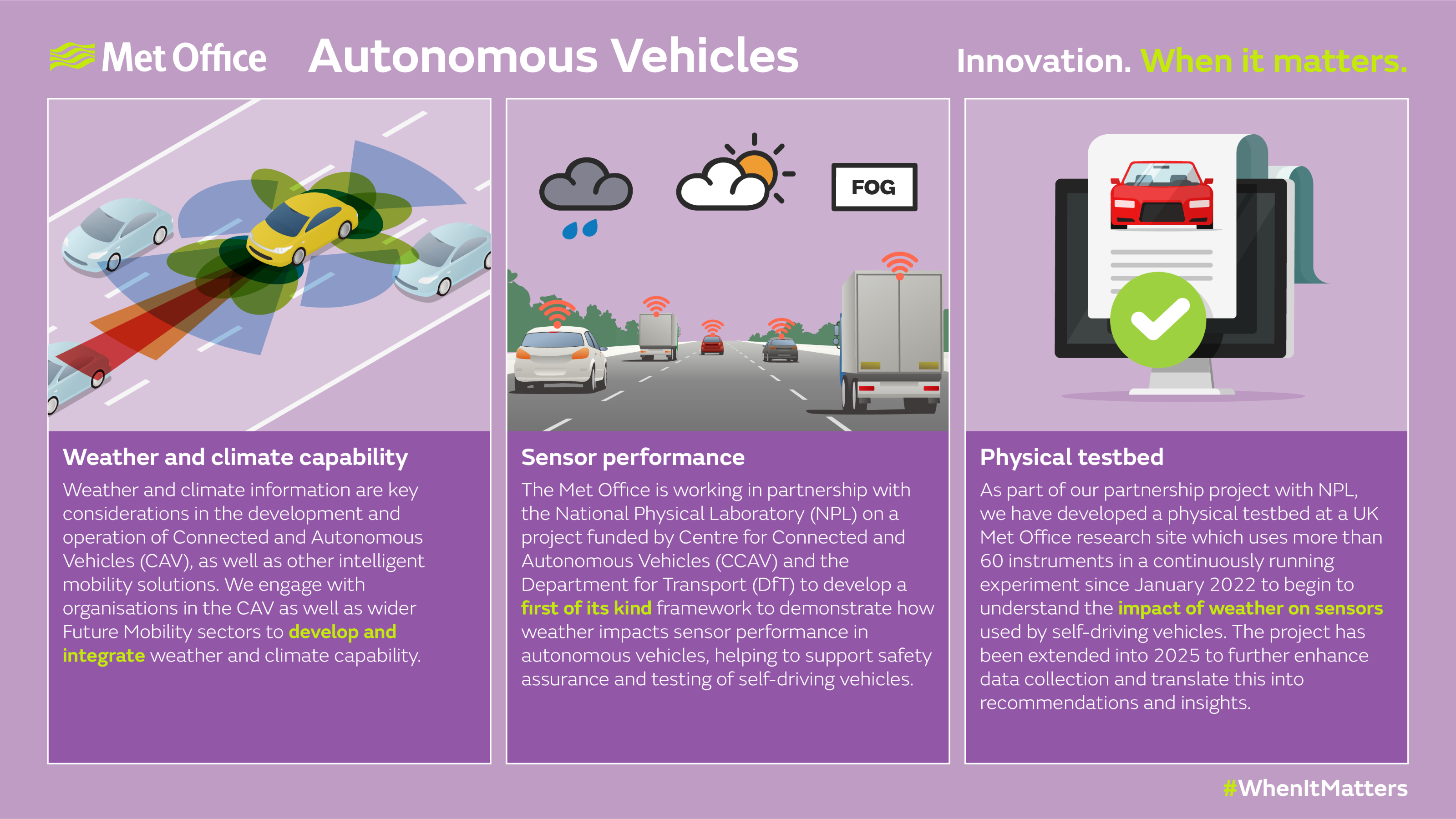Connected and Autonomous Vehicles (CAV) Sector Services
The weather impacts all aspects of travel and presents additional challenges to the safe and efficient operation of CAVs.
The Met Office has world-class expertise in understanding how weather affects sensors and systems, and we are a recognized provider of accreditation for meteorological instruments, particularly in aviation. Weather conditions like snow, ice, rain, fog, and bright sunlight impact driving and the performance of sensors such as LiDARs, radars, cameras, and vehicle connectivity. Solar storms can disrupt radio communication and GPS. Weather also influences demand on transport networks, requiring Mobility-as-a-Service (MaaS) infrastructure to adapt.
Weather data, consultancy, and research are crucial for developing future mobility technology. Embedding real-time weather data into vehicle and infrastructure systems enhances safety and efficiency.
Collaboration with CCAV
The Met Office collaborates with the Centre for Connected and Autonomous Vehicles (CCAV) and other partners to shape safety parameters for self-driving vehicles. We are involved in a major project with the National Physical Laboratory (NPL) to develop a Sensor Assurance Framework, funded by CCAV, to assess how well CAV perception sensors perform in various weather conditions.
Request Reports
Contact us if you would like copies of our recent reports exploring the likely frequency and severity of different weather conditions that affect CAV performance:
- An investigation into short-period, extreme rainfall in the UK in the context of Connected and Autonomous Vehicle (CAV) deployment
- An investigation into the occurrence of snow and hail in the context of Connected and Automated Vehicle (CAV) deployment
Why Work with the Met Office?
We offer accurate weather and climate data, consultancy, and research for future mobility technology. Our experienced consultants provide access to:
- World-leading meteorological expertise for the transport sector
- World-class science, research, and development
- Industry-specific weather data
- Flexibility to deploy meteorologists
- Bespoke road surface forecasting
- Added value from consultancy

Get in touch
Call us
We are available 24/7.
0370 900 0100Email us
Fill out this short form and we'll get back to you.
Contact Us formFollow us
Linkedin XGet in touch
Call us
We are available 24/7.
0370 900 0100Email us
Fill out this short form and we'll get back to you.
Contact Us form

